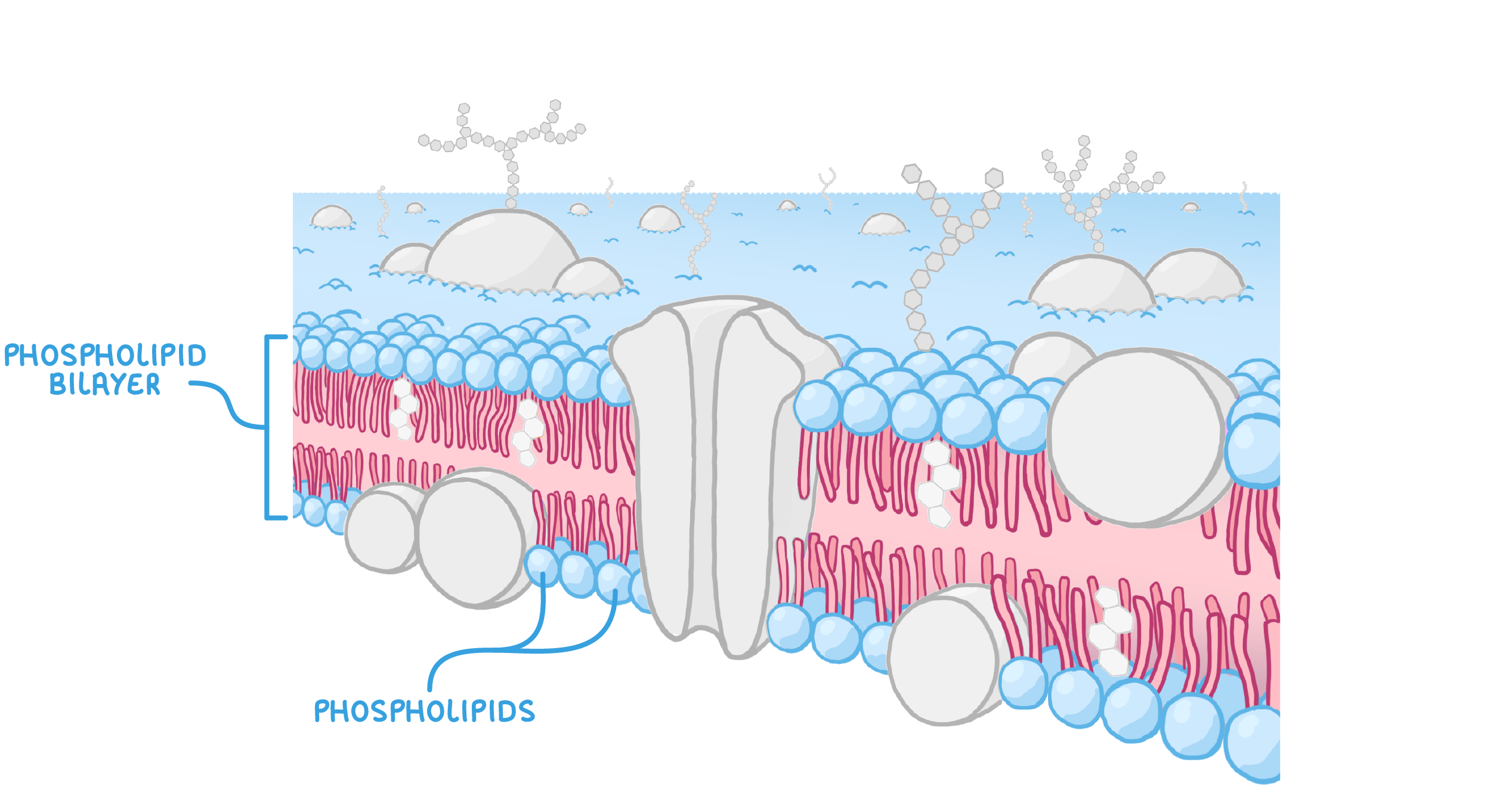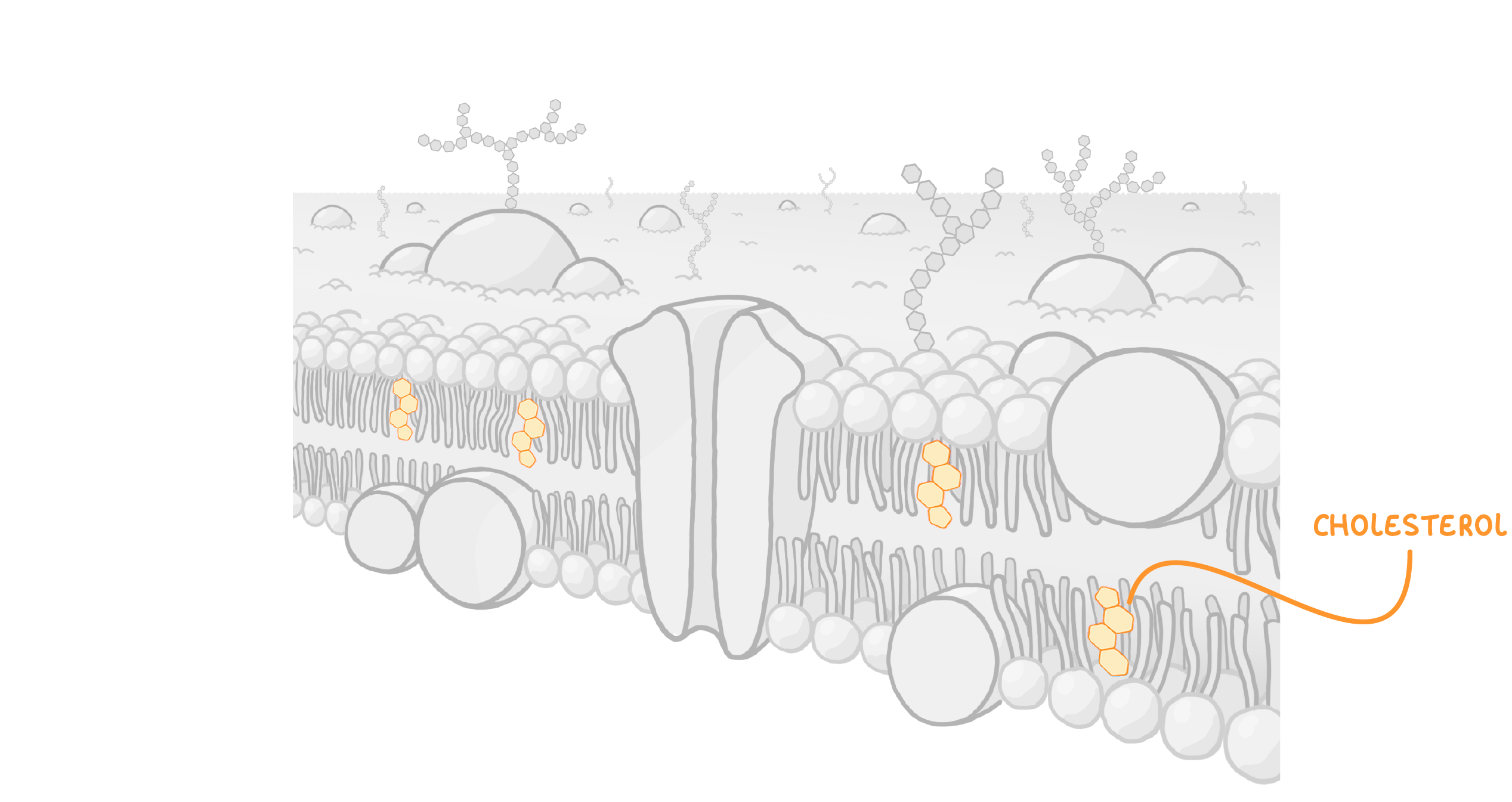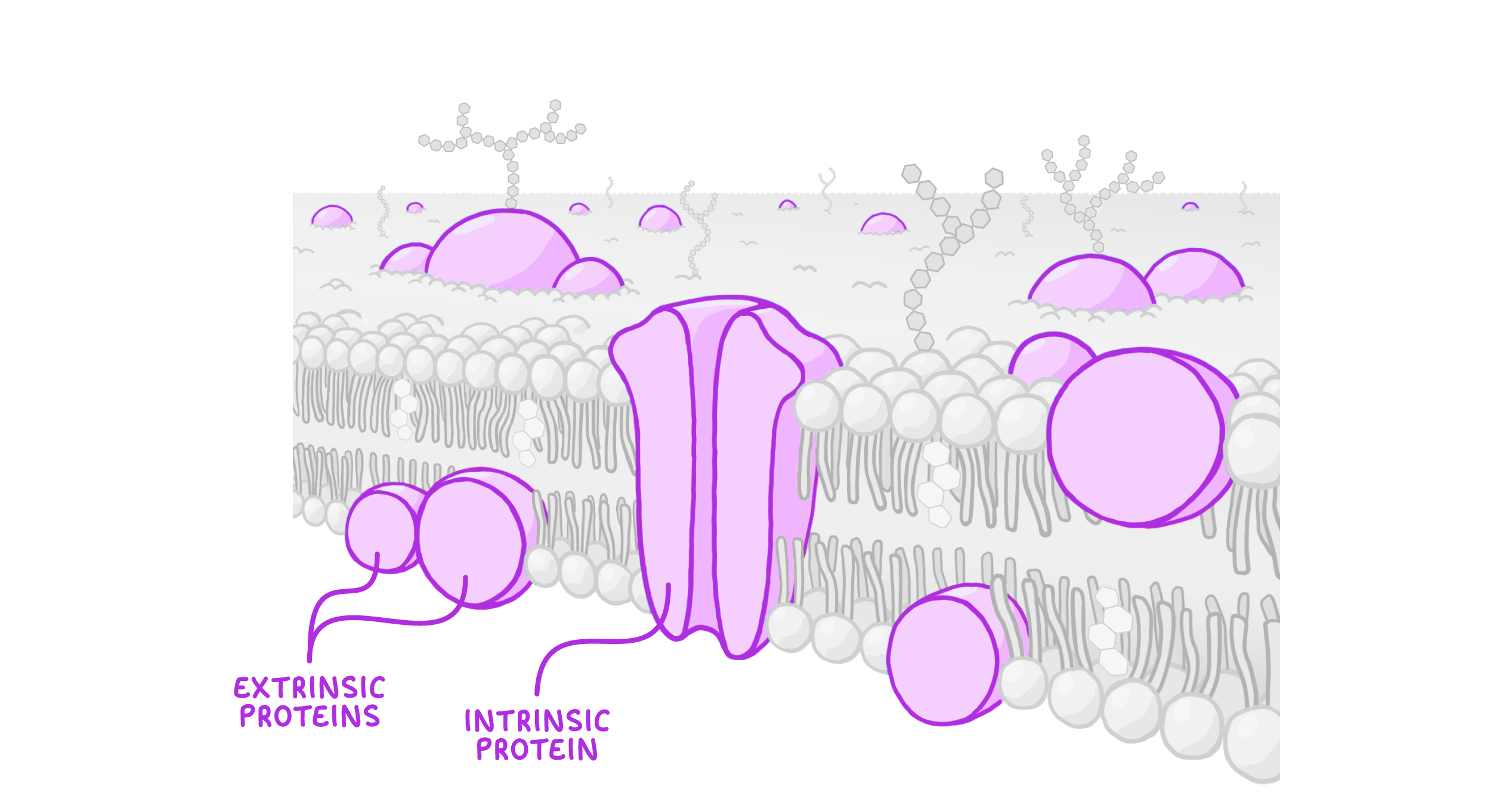Fluid Mosaic Membranes
This lesson covers:
- The role of cell membranes in living organisms
- The fluid-mosaic model of cell membranes
- The structure and function of cell membrane components
Roles of cell membranes There are two main types of cell membrane:
Both types of membrane are partially permeable, meaning they let some molecules pass through, but not others. |
Fluid-mosaic model In 1972, the fluid-mosaic model was proposed to describe the structure of cell membranes:
|
Structure of the membrane  |
Key components of cell membranes:
|
Phospholipid bilayer Each phospholipid molecule is made up of a hydrophilic 'head' and a hydrophobic 'tail'. This causes phospholipids to arrange themselves into a bilayer so that the hydrophilic heads are facing out (towards water) and the hydrophobic tails are facing in (away from water). |
 |
This arrangement creates a hydrophobic centre in the bilayer so that water-soluble substances cannot pass through. However, fat-soluble substances can dissolve in the bilayer and pass directly through the cell membrane. |
Cholesterol Cholesterol molecules provide stability to cell membranes. |
 |
Cholesterol molecules consist of a hydrophilic and hydrophobic region. The hydrophobic regions bind to phospholipid fatty acid tails, causing them to pack more closely together. This reduces the fluidity of the cell membrane. |
Proteins Proteins in cell membranes can be grouped into two categories: intrinsic and extrinsic proteins. |
 |
Intrinsic proteins:
Extrinsic proteins:
|
Glycoproteins and glycolipids Glycoproteins consist of intrinsic proteins attached to carbohydrates, whereas glycolipids consist of lipids attached to carbohydrates. |
 |
Glycoproteins and glycolipids are involved in the following:
|